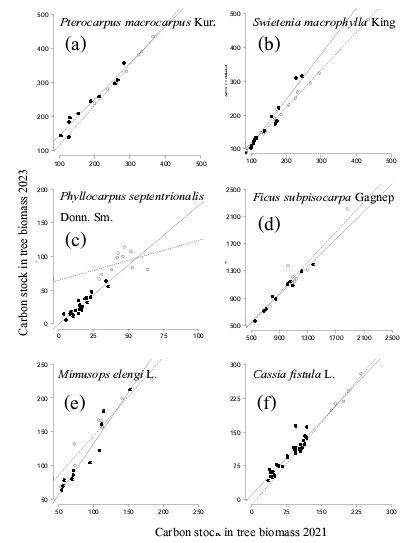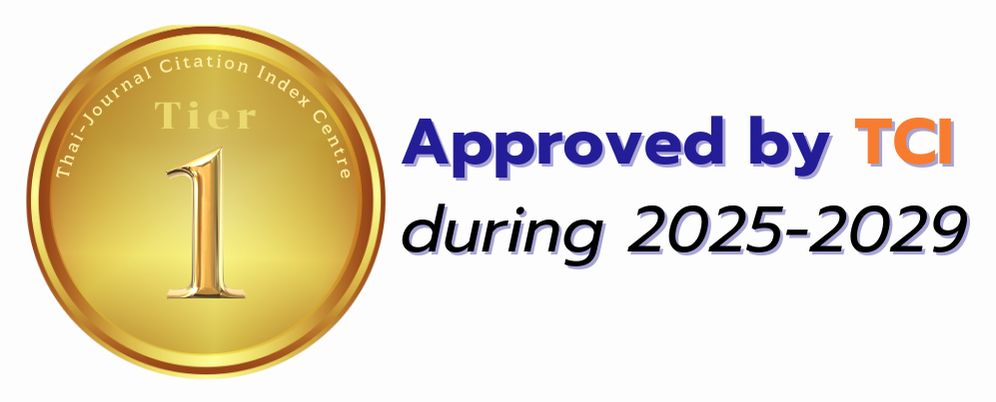The Effect of Tree Pruning on Growth and Potential of Carbon Storage in Aboveground Biomass in Royal Park Rajapruek in Chiang Mai Province
Keywords:
Urban forest, service area, ecology, environmentAbstract
Background and Objectives: Royal Park Rajapruek is an urban green area that plays important role on the environments. The suitable canopy pruning promotes tree growth and increase potential of carbon dioxide (CO2) absorption. This study aimed to evaluate the effect of canopy pruning on growth rate and carbon storage in tree aboveground biomass.
Methodology: The selected tree species was canopy pruned (CP) in three types; 1) > 50% of CP (Pterocarpus macrocarpus and Swietenia macrophylla), 2) < 50% of CP (Phyllocarpus septentrionalis, Ficus subpisocarpa, Mimusops elengi , and Cassia fistula) and 3) no canopy pruning. Then, the evaluate on the growth rate and carbon storage in aboveground biomass was done during 2021-2023 based on allometric equation of Chave et al. (2005).
Main Results: The relative growth rate (RGR) of Pterocarpus macrocarpus and Swietenia macrophylla (> 50% canopy pruning) had significantly (P < 0.05) different with no CP. In term of relative growth on biomass, the CP and without CP of Pterocarpus macrocarpus had significantly (P < 0.05) that lower value was found, 0.08 and 0.12, respectively, but it had no significant for Swietenia macrophylla. Regarding the CP < 50%, the absolute growth rate (AGR) of Phyllocarpus septentrionalis and Mimusops elengi was significantly (P < 0.001 and P<0.05, respectively) different with no CP which increased rate was found. In contrast, the negative RGR of diameter for CP was found for Cassia fistula, however, the AGR and RGR of height showed positive correlation. In terms of biomass and carbon storage, these were significantly (P < 0.001, and P < 0.05, respectively) different for Phyllocarpus septentrionalis and Mimusops elengi which increased up to 95 percent. Then, they showed significantly (P<0.001, and P<0.05, respectively) increased aboveground biomass (49.59 and 12.6 km.yr-1, respectively). While, Cassia fistula with CP had low RGR and carbon storage. Contrasting with Ficus subpisocarpa that had no significantly different between two practices.
Conclusion: Canopy pruning is important on tree growth rate that effected on variation of biomass and carbon storage. Thus, appropriate canopy pruning should concern for specific species, in particular to promote growth and carbon storage.
Downloads



.png)





